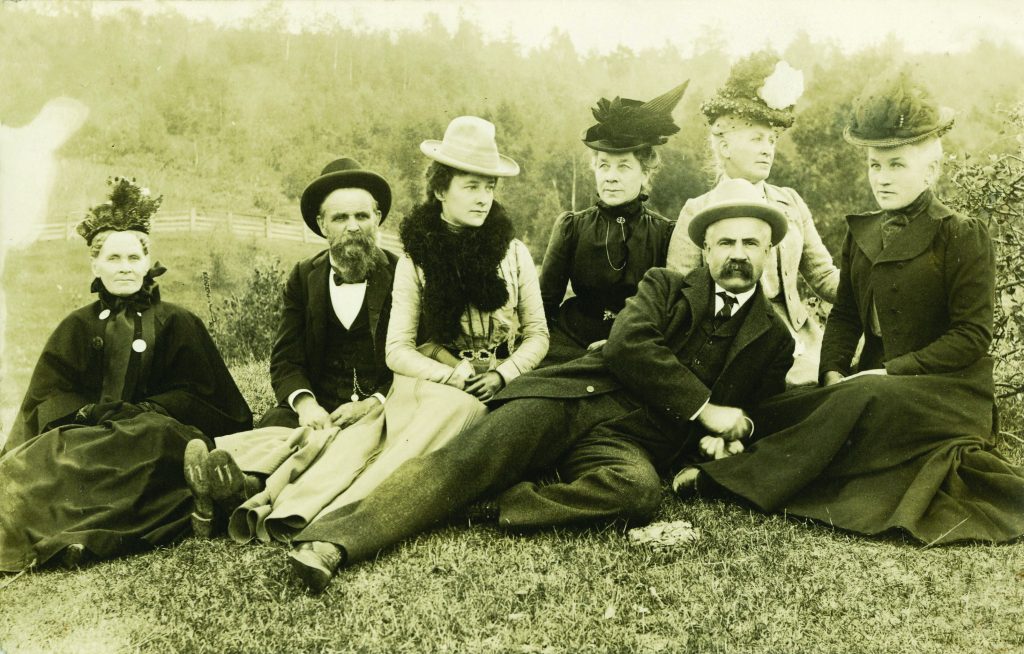Mike Smith
The Lure of Real Photo Postcards
One the first things that attracted me to golden age (1900–1914) postcards was how beautiful so many of them were. When the private sector finally wrested postcard production and sales from the government (i.e., the post office) in 1895, market competition over the next decade or so led to ever-improving designs and an explosion of consumer demand. As a testament to how sophisticated the printing technology was back then, many golden age cards look as fresh and brilliantly coloured as they were when they left their publishers’ plants. In fact, it was the vibrant red colour on a circa 1910 postcard of the Ontario Red Ensign that got me interested in antique postcards in the first place. In a nutshell, my interest in early postcards was and continues to be fuelled by the quality of the colour printing.


This is why I never gave real photo postcards, or RPPCs as they are known to collectors, a second look until quite recently. After all, there’s no colour to admire. These cards are just black and white photos that were developed on paper with a preprinted postcard back. So why do collectors like them so much? Well, it took a few decades but my attitude towards them has certainly changed. As I catalogued more and more RPPCs in aid of my handbook projects, I realized that in most cases these cards had terrific scenes of our social history. In addition, for the most part they weren’t altered or otherwise fiddled with, which is definitely not the case with many of their printed postcard cousins. RPPCs thus present a true image of an actual point in time. As an added bonus, a lucky collector may even come across an RPPC made by a prominent Canadian photographer such as Toronto’s F. W. Micklethwaite, Midland’s J. W. Bald or Goderich’s Reuben R. Sallows (see Figures 1 and 2).

Although a healthy chunk of the golden age RPPCs available to collectors today were made and marketed by individual photographers, larger Canadian postcard publishers such as Brantford’s Stedman Bros. and Toronto’s Rumsey & Co. also got into the act. In one of the Stedman Bros. ads I’d read, RPPCs were marketed as “Real Photo Local View Cards” and were available at $3.00 per hundred in lots of 125 per subject, or $2.50 per hundred in lots of 250 per subject (see Figure 3). All one had to do was mail in a “good sharp photo of the subject you want and we (Stedman Bros.) will do the rest.” In case you’re wondering like I did when I first came across an ad for mass-produced RPPCs, in 1886 a Scotsman named John Urie patented a “continuous photographic processing” method by which photographs could be machine printed at the rate of hundreds of copies an hour. Within a couple of decades, this technology had advanced to the point that even J. W. Bald ordered a British-made Graber postcard printing machine for his Midland studio in 1912. For the record, J. W. Bald was making RPPCs right up until he retired in 1953, and continued his passion for photography at home until shortly before his death in 1961 at age 94!

But of all the Canadian postcard publishers I’ve researched for my numerous handbooks, none even come close to the RPPC production of Rumsey & Co. For example, in the last six months or so I’ve catalogued over 3,500 of this firm’s cards, showing wonderful views from Yukon to Prince Edward Island, and more than 40% of them were RPPCs! This is an incredible amount considering that the combined RPPC output of powerhouse Toronto publishers Atkinson Bros., Warwick Bros. & Rutter, and W. G. MacFarlane was just over 30 cards. As for the aforementioned Stedman Bros., this firm has less than 100 RPPCs to its name even though it was publishing cards until the 1930s. It appears that Rumsey & Co. established a niche market for this particular postcard type and today’s collector is certainly reaping the benefits (see Figure 4).


Great article Mike! It has. of course whetted my appetite for the Majestic in Midland Harbour by JW Bald….see you at the Postcard Show!